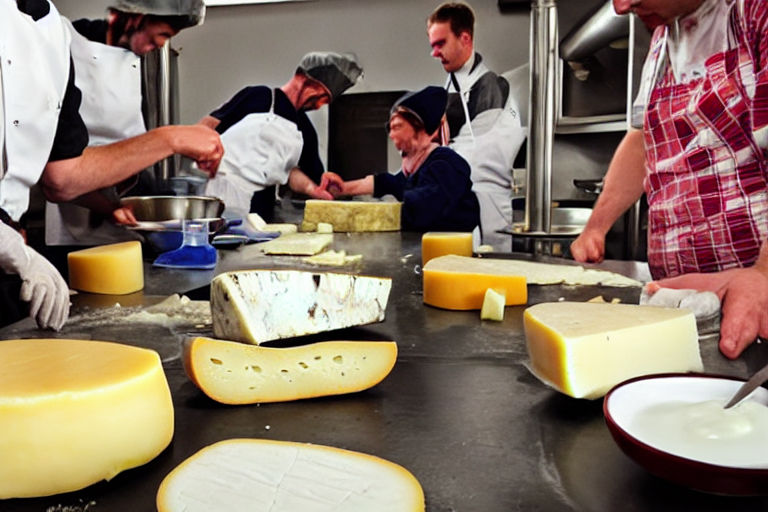The Art of Cheese-Making: How Artisanal Cheeses are Crafted by Experts
Cheese is an ancient food, with origins dating back to the beginning of recorded history. Throughout the centuries, cheese has been made in all parts of the world, with a huge variety of recipes and techniques. Today, cheese-making has evolved into both an art and a science, with artisanal cheesemakers using traditional techniques and modern technology to create unique and delicious cheeses.
The History of Cheese-Making
The art of cheese-making is believed to have originated in the Middle East and central Asia around 8000 BC. Ancient people discovered that milk could be stored for longer periods by fermenting it with bacteria, which turned it into a solid. This produced cheese, which could be stored for months and even years without spoiling. Cheese-making spread throughout Europe during the Roman Empire, and by the Middle Ages, cheese was a staple food for people throughout the continent.
Today, cheese is made using a variety of techniques, with each cheese having its own unique flavor, texture, and aroma. Artisanal cheesemakers create cheeses using traditional methods and patiently wait for the cheese to ripen to achieve the desired taste and texture.
The Process of Cheese-Making
The process of cheese-making involves several distinct steps:
- Coagulation: This process involves adding rennet or an acid to the milk, which causes it to coagulate and form curds. The curds are then cut into small pieces, allowing the whey (the liquid part of the milk) to drain off.
- Draining: The curds are then placed in a mold, where they will continue to drain and take on the shape of the mold. Different cheeses require different degrees of pressing and draining.
- Ripening: The cheese is then allowed to ripen, which can take anywhere from a few days to several years, depending on the type of cheese. During this time, the cheese will develop its unique flavor, texture, and aroma.
- Aging: Some cheeses are aged for long periods to enhance their flavor and texture. Parmesan, for example, is aged for at least a year, while cheddar is typically aged for several months.
The Role of Artisanal Cheesemakers
Artisanal cheesemakers play a vital role in preserving traditional cheese-making techniques and techniques. These experts use locally produced milk and carefully monitor the cheese-making process to ensure that each cheese has a unique flavor and texture.
Unlike mass-produced cheeses, which are made using the same recipe and techniques regardless of the milk source, artisanal cheesemakers carefully select their milk source to produce a distinct flavor and aroma for their cheese. They also use traditional techniques that have been passed down through generations to create unique cheese varieties.
Conclusion
Artisanal cheese-making is an art that requires both skill and patience. These experts use traditional techniques and carefully selected milk to produce distinct cheeses with unique flavors and aromas. By preserving traditional cheese-making techniques, artisanal cheesemakers play a vital role in promoting culinary diversity and preserving cultural traditions.
If you are a cheese lover, take some time to explore the many varieties of artisanal cheeses available today. You may be surprised by the range of flavors and textures that are waiting to be discovered!



